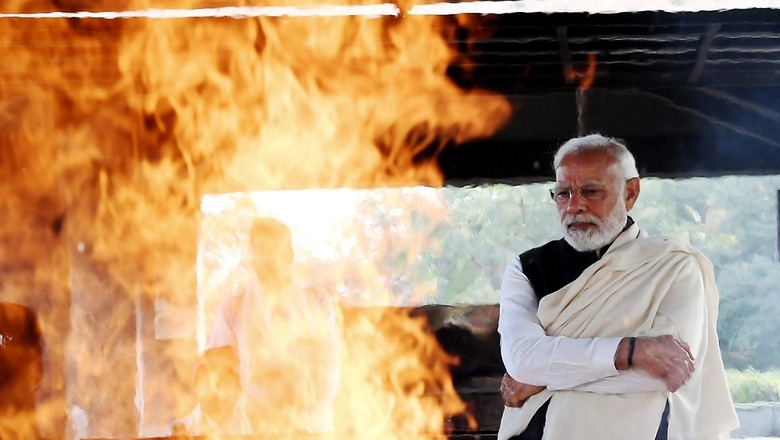
views
Muktidham, Gandhinagar, 9.08am
Lending a shoulder to his mother’s bier from the right side was Narendra Modi. Over the past eight years as the country’s Prime Minister, and before that for a little over 12 years as chief minister of Gujarat Modi has won plaudits from across the country and world for his good governance. But here he wasn’t the Prime Minister or the beloved leader who is celebrated in India and outside. He was just Modi, his mother Heeraba’s Narendra.
His mother’s teachings were set in stone for Modi
The emotions on PM Modi’s face were not hidden from the 50-60 people who were at the crematorium and saw him carrying his mother’s bier. Having walked through thorny thickets of adversities and challenges unscathed, this was the moment for Modi that signalled an irreparable loss. After all, in the five and a half decades of public life, if anything was personal for Modi, it was his mother. The same mother, who would inspire him with her little nuggets of wisdom that sounded simple but had a deep impact on Modi.
His mother’s passing leaves a massive void in Modi’s life
Heeraba’s ‘mukhagni’ took place at 9.22am. Present there were her eldest son Sombhai on one side and youngest son Pankaj Modi. In the middle was Narendra Modi, his mother’s favourite. The funeral pyre was engulfed by flames. It kept burning for about half an hour. Standing next to the flames was Narendra Modi, at times quietly observing the blazing pyre, and on other occasions pouring ghee into the fire. His eyes were gazing into the great emptiness; after all his mother Heeraba’s death had left a great emptiness in Narendra Modi’s life that will never be filled.
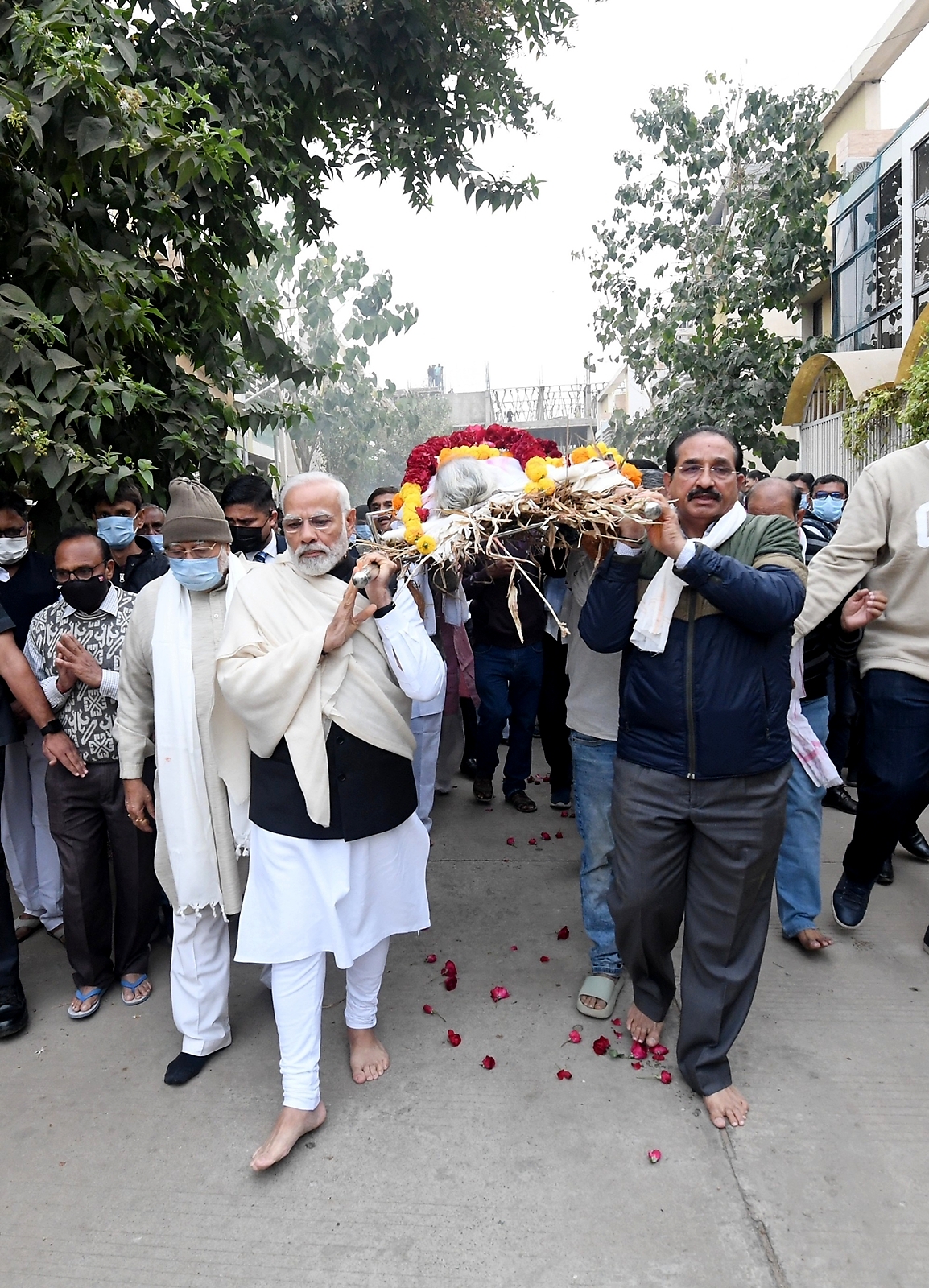
On her birthday too, Modi’s mother taught him something
The nation and the world learnt about Heeraba’s passing at around 6am on Friday after Narendra Modi tweeted about it. Even in that tweet, there was a glimpse of his deep, extraordinary relationship with his mother. There was a reference to the words that his mother had uttered on June 18, 2022, when Modi had gone to meet her in Gandhinagar on the occasion of her entering her 100th year. While blessing him, she said, “Work with sagacity, live life with purity.”
For Modi, his mother was the holy trinity
In his mother Heeraba, Narendra Modi had always perceived the presence of a trinity, embodying the journey of an ascetic, the representation of a selfless karmayogi, and a life dedicated to values. He shared these feelings about his mother with the world through his tweet on Friday. After all, it was his mother’s ascetic attitude that made Modi visit her again and again, despite becoming a hermit early in life and later a ‘pracharak’ of the Rashtriya Swayamsevak Sangh (RSS) that kept him away from his family.
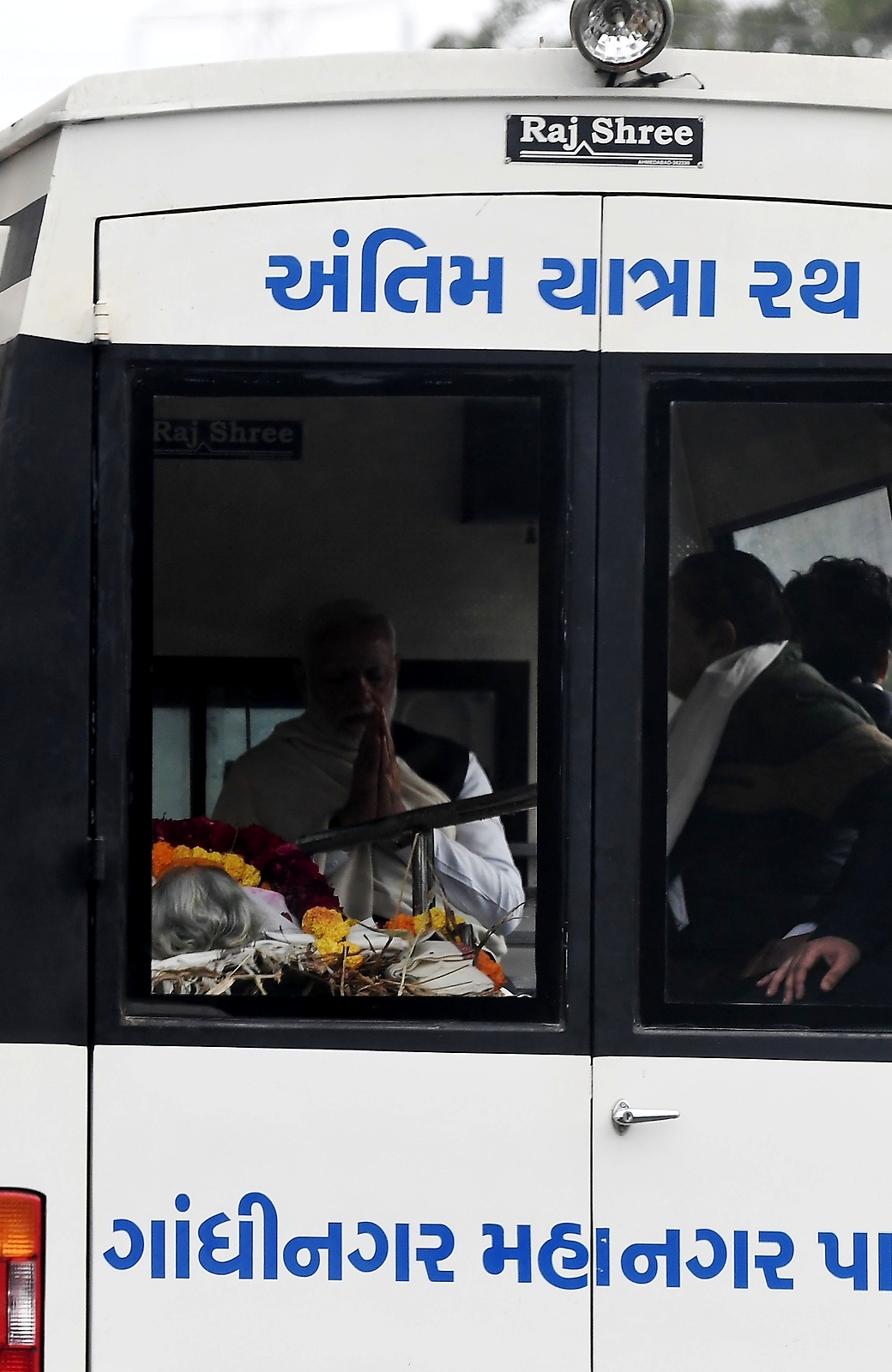
Modi would often come to meet his mother
His bond with his mother was special, and so, after spending two years early on traversing different parts of the country and pursuing spiritual practices he came home for one day just to get his mother’s blessings and left only to become an RSS pracharak in a few years. His mother wasn’t highly educated, but she frequently passed on to him the wisdom inherent in the societal and cultural values of India. Bringing up her children amid a myriad of challenges, she always impressed upon them the importance of serving society.
The inspiration to fight corruption came from his mother
When Modi became the chief minister of Gujarat for the first time on October 7, 2001, he went to get his mother’s blessings. The first thing she told him was, “Son, never ever take a bribe.” Heeraba’s son Narendra has always had this in mind because of which he has made efforts since then to provide graft-free governance first in Gujarat and then in the country, from bringing in necessary laws to introducing direct benefit transfer, in a bid to kick out corruption. Inspired by his mother’s wise words, as chief minister he gave the famous slogan, “Na khaataa hun, naa khaane deta hun.”
The lesson to prioritise public good over personal grief
Another lesson from his mother has always motivated Narendra Modi. To spend all the time one has in the service of people, focusing on their happiness rather than being stuck in the mire of personal sorrows. He remembered this lesson even on the day of her death, when he learnt about her passing in the morning. On learning about his mother’s demise, Modi immediately left for Ahmedabad from Delhi, and kept the whole affair a private matter.
Even on mother’s death, Modi didn’t cancel govt engagements
Usually, when a family member of a leader dies, the occasion is used to further their political agenda, and supporters and cadres are gathered in large numbers. But the situation in Modi’s case was very different. Apart from a few ministers, some senior leaders from Gujarat BJP, and a handful of friends from the pracharak days, everyone else was asked not to come. If Modi hadn’t sent out a message, there would have been a flood of leaders and workers from across the country on the occasion. After all, who doesn’t want to stand beside their leader in such a moment of grief?
Modi lost his father in 1988
For Modi, such matters remain a private affair. He was on Kailash-Mansarovar Yatra in 1988, learnt about his father’s ill health on returning, went to meet him, and after seeing his son one last time his father breathed his last. The very next day Modi left home to fulfill his responsibilities as pracharak towards his organisation, country, and society.
Even during his mother’s illness, Modi kept working
It was the same this time. Hearing about his mother’s condition, the PM came to Ahmedabad on the afternoon of December 28. Heeraba’s health was frail, after all, she was in her 100th year. But after enquiring to his mother about her health, Narendra Modi returned to Delhi, to fulfil his responsibilities as Prime Minister. After all, a country of 130 crore people made him Prime Minister twice with unprecedented support and Modi understands the gravity of that. How could his personal issues and sorrows overshadow his public duties when his mother taught him to put society before self?
Modi also learnt to dedicate himself to his duties from Sardar
Modi had also learnt this lesson from his hero Sardar Vallabhbhai Patel. His statue, the world’s tallest, near Sardar Sarovar Dam in Kevadia, Gujarat, as well as his life give this message. Few would remember that when Sardar Patel was practising as a renowned criminal lawyer in Gujarat, his wife passed away in 1909. While arguing in court, Sardar had received a telegram informing him about this. But he kept it in his pocket and continued strongly arguing for his client. When the hearing concluded for the day, the judge and everyone else in court learnt about this, and everyone was left astounded.
Modi was back at work shortly after the last rites
The dedication that Sardar displayed towards his duties was visible in Modi on Friday. He reached his brother Pankaj Modi’s house in Raysan area at around 8.15am on Friday to perform pushpanjali for his mother. But even before reaching Ahmedabad, Modi had decided he wouldn’t cancel any of his government engagements for the day. Even if he wouldn’t be able to make it to the actual venue of a public programme because of his mother’s death, he would participate through videoconferencing. Any other leader would have called off public programmes not just for the day but the next few days, and no one would have complained. But Modi is different.
A moist-eyed goodbye to his mother
Modi didn’t spend a lot of time at his brother Pankaj’s home. He brought his mother’s body to the crematorium in sector-30, Gandhinagar, which he had got fixed up as chief minister between 2002 and 2007. Heeraba’s body was taken out of the vehicle at the gate and lent a shoulder to bring her to the pyre kept ready inside. The body was placed on the pyre and ‘mukhagni’ was performed. With teary eyes, Heeraba’s son Narendra Modi bid her farewell. It was the last time he was seeing her in the flesh, as after that only memories remain.
In the presence of a handful of people, Modi performed last rites
After about half an hour, Modi signalled to the state ministers and senior leaders from the party to leave. After all, why should the work of his fellow public representatives be impeded because of his personal tragedy. Already beforehand he had asked most of his colleagues and ministers not to come to the crematorium. According to reports, apart from BJP leaders, central ministers and chief ministers from the party, even several CMs from rival parties wanted to be present at the funeral of the PM’s mother. But they were turned down.
The mother’s teachings will be constant companions
Heeraba’s pyre kept burning for about an hour, but only 25-30 people were present for the final half hour including some relatives and close associates, while everyone else had been asked to leave from Modi’s side. Moments of sorrow can overcome years of bitterness, and this became evident to the people when Modi’s once-party colleague turned rebel in 1995 Shankersinh Vaghela had arrived at the crematorium long before Heeraba’s body had reached there. When Modi arrived, they shared a moment, and Vaghela said, “Whenever we met, I’d ask you about your mother’s health. What would I ask now?”
Modi quietly stood next to his mother’s pyre
The thought must have arisen in Modi’s mind that who can compensate for the loss of the mother’s affectionate shade? After all, no one can replace one’s mother. These thoughts must have been swirling in Modi’s mind as while pacing around he would on several occasions stand quietly next to the pyre, staring into the flames. For the few people present, this was a glimpse of Modi’s persona as the teary-eyed son of Heeraba, stripped of all the razzamatazz of being the country’s Prime Minister in those moments.
Carried on public engagements from Raj Bhavan in Gandhinagar
Perhaps staring at his mother’s pyre once again reminded Modi of her teachings to not spend his time trying to address his own grief and concerns but resolve the problems of the people. Because of this, having reached the crematorium with his mother’s body at 9.08am, Modi left for the nearby Raj Bavan at about 10.10am from where he would participate in several public engagements through videoconferencing. The simplicity on display while visiting his mother was also palpable during her final journey, as instead of a massive cavalcade fit for a PM, Modi arrived at the crematorium with just one vehicle. It was the same as he was with his mother during his journey from CM to PM: no pageantry, no VIP culture.
Prioritising public need over personal pain was the message
It is difficult to believe that the son who was standing next to his mother’s pyre just a few minutes ago, was then as PM launching a Rs 7,800-crore project to address the fundamental needs of the people of West Bengal through videoconferencing. This is what makes Modi extraordinary, and it’s this extraordinariness that made his mother Heeraba proud of him, and now she will continue to inspire him through the mind’s eye.
Read all the Latest Opinions here















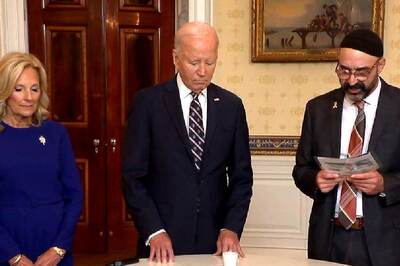

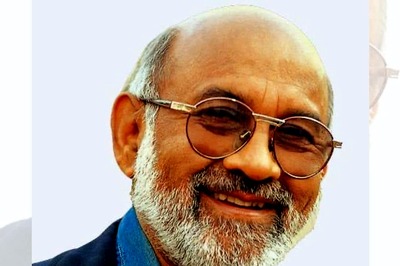
Comments
0 comment